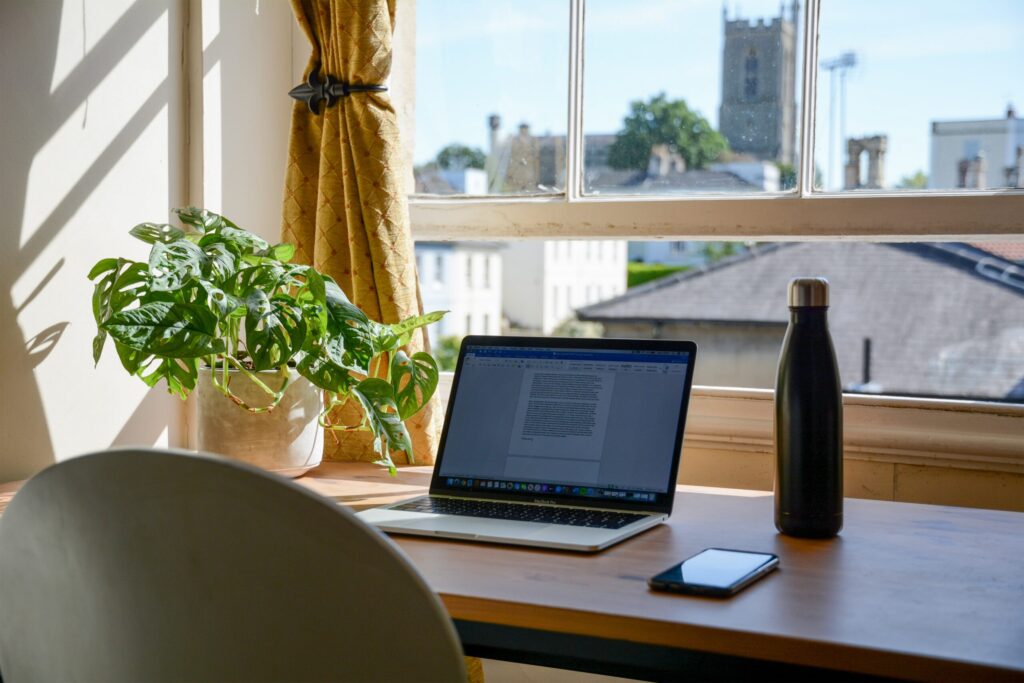With such changes likely to remain for some time yet, employers must look at providing the right kind of support for their employees. So, as we prepare for a post-COVID world and embrace working from home, at least in part, as the new normal, we consider what steps employers should take to keep their workforces safe and happy for the long term.
Carrying out proper Health & Safety risk assessments for employees
Employers have the same health and safety responsibilities for their employees whether they are working at home or in the office. It is crucial that employers put the health and safety of their staff at the forefront of their considerations and implement measures to ensure the work employees are carrying out can be done so, safely.
For those people who work with display screen equipment (DSE), they may now be doing so at home on a long-term basis or sharing their time between home and the office where they will be ‘hot desking’ with colleagues. The employer must provide a suitable and sufficient assessment of risk concerning the use of DSE and ensure that control measures are put in place and enforced.
This will be particularly challenging when dealing with vulnerable employees who require additional controls in setting up and maintaining a safe place of work, but this needs to be considered. In an ever-evolving situation, employers need to keep their DSE arrangements under review, updating policies and procedures to reflect working practices, and having regular discussions with workers and their representatives to assess whether additional steps are needed.
Mitigating legal risks as an employer
The speed of change to home working at the start of the pandemic invariably meant that most employees remained on original employment contracts which did not envisage homeworking. As people start to move to a more permanent position, either full-time home working or a split, it will be important to update these contracts.
New drafts should consider several amendments, such as the main place of work, core working times, and pay/benefits including travel expenses. Implementing changes should be done in consultation with the workforce and should seek to reflect the new working reality.
Much as contracts will need careful updating, so will many policies and procedures. New risks to a business may emerge from home working, including data protection and confidentiality or use of company equipment and insurance. These and other changes will need to be reflected in company policies, including acknowledgement that meetings, including appraisals and even disciplinary hearings, may no longer be face to face.
Protecting overall employee wellbeing
Everyone has faced personal and professional challenges of one kind or another over the last twelve months. Therefore, it is vital that businesses actively work to increase awareness of mental health and to protect their teams. Organisations who have used this period as an opportunity of learning and reflection on how to protect the wellbeing of their employees will create an environment for their teams to thrive and succeed in navigating the post-COVID minefield.
Mental Health First Aid is an excellent first step towards protecting employee wellbeing, however, for it to be as effective in the virtual world, your wellbeing ambassadors must be equipped with the knowledge of how to spot issues. While adequate MHFA provisions will provide an environment to protect employees who reach a crisis point, the key activity should be around doing all an organisation can to encourage positive wellbeing and good mental health for all staff. Understanding some of the new requirements of employees, such as a greater understanding than ever of work-life rhythm, the balance of office and home-working time, and competitive reward will help businesses and their employees to emerge from COVID-19 stronger than ever. Considerate planning now will help maintain the wellbeing of your employees for the unknown times ahead.
Over the next few weeks, Mark Littlejohns, Health, Safety & Environment professional, and employment law experts Richard Thomas and David Lewis, will be exploring these topics in detail and offering advice on mitigating prospective risks.
We’ll be covering the importance of carrying out proper health & safety risk assessments for employees, preventing legal risks as an employer, and how to protect overall employee wellbeing.
If you have any questions or would like more information, you can contact us here.




